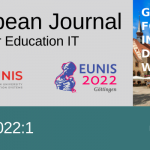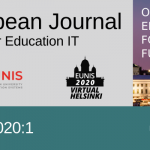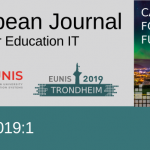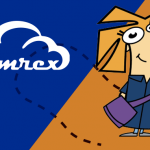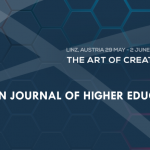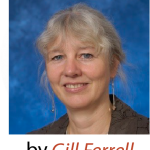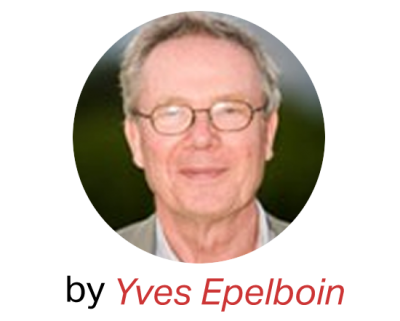
EUNIS Journal of Higher Education IT – EJHEIT
This issue of the EUNIS Journal of Higher Education IT (2015/3) consists of the full papers from the EUNIS 2015 congress.
In total, 27 full papers were submitted to the congress. The Book of Abstracts is also added as a re-submission to this Issue. In this issue there is a focus on the tracks Management and governance and Corporate Information Systems and Business applications, Information and communications technology, Teaching and Learning
Book of abstracts

Management and governance
EUNIS Congress’ 21st Birthday – A Historical Perspective on its Proceedings
Noel Wilson, Johan Bergström
Abstract
EUNIS Congress’ 21st Birthday – A Historical Perspective on its Proceedings
Established in 1993, the EUNIS organisation is Europe’s equivalent to the United States of America’s EDUCAUSE and Australasia’s CAUDIT organizations. Its objective is “to contribute to the development of high quality information systems” by “bringing together those who are responsible for the management, development and the policy for Information Technology in Higher Education in Europe”. EUNIS has adopted a number of approaches to achieving its objective, one being its well-established annual Congress alongside, for example, specialist Task Forces, the recently established EUNIS Research and Analysis Initiative (ERAI) and its e-Journal, the EUNIS Journal of Higher Education IT (EJHEIT) launched in quarter four of 2014.
2015 marks the 21st year of the EUNIS Congress, affording a timely opportunity to reflect on the range of issues addressed and to provide biographical summaries of topics presented, based on details extracted from available Congress programmes and other historical information sources.
The actual and projected work of the ERAI, through EJHEIT and the Congress, in analysis and dissemination of synopses of contributors’ presentations is outlined. Complementing this information are some general findings from analysis of the accumulated abstract summaries from around 2000 authors from 41 countries provide over 1200 papers since the beginning of this century.
The contexts of “continuing professional development” (CPD) and of “what makes a good Chief Information Officer (CIO)” are qualitatively explored through an analysis of the available data. EUNIS’ objective has a focus on senior IT professionals; on communications and social networking. Gartner research (2010) suggests “achievement through, by and with people”; “collaborative working”; “ability to inspire people both inside and outside their organization” as some key success factors for a successful CIO. “Focusing on leadership and people skills – the ‘soft’ things … is in fact the biggest determinate of their success, or failure.” This statement, whilst set in an organizational context has wider relevance with EUNIS’ various initiatives playing an important role.
Information Security Risk Management in Higher Education Institutions: From Processes to Operationalization
Wolfgang Hommel, Stefan Metzger, Michael Steinke
Abstract
Information Security Risk Management in Higher Education Institutions: From Processes to Operationalization
Information security has successfully gained high levels of management attention in European higher education institutions (HEIs) over the past decade, but is the data stored in HEI data centers, IT departments, or faculty server rooms really more secure as a consequence? In this article, we first review how information security policies and risk management processes were typically introduced in HEIs as an important first step, but then argue that many HEIs still need to complement these “people and processes” steps with efforts to make efficient use of them on the “technology” layer.
HEI servers that can be accessed from the public Internet have a long history of being lucrative targets for attacks by all kinds of miscreants because, e.g., the network bandwidth available at many HEIs can be misused for sending Spam emails or participating in high–volume denial–of–service attacks. More targeted attacks are performed, e.g., to spy on intellectual property related to research projects and HEI collaborations with industry partners. And in times of doxing, i.e., the black–hat hacker sport of making an organization’s internal documents and emails public, as in the 2014 Sony case, the demand for protecting certain data even against more determined attackers become obvious. Until about 10 years ago, most system administrators and service operators were sufficiently familiar with the information security implications of the hardware and software in their area of responsibility. But meanwhile, services such as private cloud hosting environments, groupware collaboration tools, and web–based learning management systems have grown to a complexity that practically cannot be mastered by individuals anymore. More often that not, complex software services are operated in production use without scrutiny regarding their security settings or thorough consideration of additional security measures that should be placed upstream.
To cope with this increase in complexity in a structured manner, security management processes, e.g., based on the international ISO/IEC 27001 standard, have been introduced, along with the assignment of responsibilities to roles such as HEI Chief Information Security Officers (CISOs), the preparation of policies, e.g., regarding data classification and secure disposal of media, and check lists for handling security incidents and data breaches efficiently. According to the textbooks and for very valid practical reasons, risk management drives each of these activities.
However, information security risk management is a process that requires a lot of information as input, and even more expertise. It can therefore quickly turn into a useless placebo paper tiger when it is not applied properly in practice. But when given only a high–level process description, many system administrators and service managers do not know how to do risk management in a meaningful way, i.e., with reasonable efforts and immediate benefits from the results. We therefore present our strategy for operationalizing information security risk management in a HEI data center with a focus on both HEI–internal IT services as well as HEI cooperation, e.g., in research projects, with the long–term goal of compiling the feedback we receive into a HEI best practice guide on information security risk management.
CIOs at German Universities – a Survey by ZKI
Hartmut Hotzel, Ulrich Lang, Martin Wimmer, Markus von der Heyde
Abstract
CIOs at German Universities – a Survey by ZKI
The ZKI e.V. (Zentren für Kommunikation und Informationsverarbeitung in Forschung und Lehre, centers for communication and information processing in research and HE) is the German consortium of HE IT service and public funded research centers. Members of ZKI are universities, universities of applied sciences and big research facilities with public funding, represented by the directors of the IT-centers as well as companies with a high interest in HE IT. ZKI was founded in 1994.
Since 2001 the rectors‘ conference [HRK13], the „Deutsche Forschungsgemeinschaft“ (DFG, German research foundation) in [DFG01, DFG 06, DFG10], the ZKI [ZKI03, ZKI08, ZKI12]and others [vdH08, Fer09, Gör11] recommended to establish a general manager for the ICT at universities called Chief Information Officer (CIO). Between 2005 and 2010 some of the German ministries of higher education (Germany has a different ministry of HE in each of the 16 lands) requested the designation of a university CIO.
An enterprise innovation: University of Reading Video Publishing System
David Tze Wan Wong, Phebe Mann
Abstract
An enterprise innovation: University of Reading Video Publishing System
Technology innovation in universities can be formidable tasks due to size of user base, the increasing distance between campus and students, but also increasing proximity that technologies such as video could establish.
University of Reading, UK, having invested in smaller installations Helix and iTunesU, then decided to implement an enterprise-level transcoding and publishing system. The process faced many challenges. The passion and commitment from a core community provided enough impetus for senior management to move the project forward. A major innovation process ensued which saw further engagements from increasingly more and diverse users. By championing best practice and demonstrating excellence in technology, entrepreneurship that is fundamental for successful innovation, this paper demonstrates evidence of excellence in many ways. The innovation remains operational and is sustaining high use with very few issues and problems for over four years. The paper suggests methodologies that others could consider in their own innovation.
UCISA Digital Capabilities Survey 2014 – Results
Gillian Fielding, Rebecca McCready, Iain Cameron, Annette Webb, Julie Adams, Grazyna Whalley
Abstract
UCISA Digital Capabilities Survey 2014 – Results
The extended abstract should contain a short summary subsequently used in the program. It contains enough information for the readers to become acquainted with the extended abstract without reading it. The summary should not include tables, figures or illustrations.
The UCISA User Skills Group conducted a survey during August and September 2014 on how UK higher education (HE) institutions are developing and supporting staff and student digital capabilities. A total of 156 HE institutions in the UK and Ireland were invited to respond via an online questionnaire containing quantitative and qualitative questions. Sixty three responses were received; a response rate of 41%.
Digital capabilities were defined as those that fit an individual for living, learning and working in a digital society. This definition also includes the infrastructure and digital environment in which individuals live and work, and a range of other capabilities including information literacy, digital professionalism, ICT skills, digital scholarship and electronic collaboration and communication.
This presentation will summarise some of the key findings from the survey in the following areas: strategy, delivery, implementation and practice, bring your own, differentiation and inclusion, looking to the future. This presentation also provides recommendations to the sector.
Research and IT
Sigma CRIS: Scientific outputs, integration and interoperability
Núria Cuní, Joan Busquiel
Abstract
Sigma CRIS: Scientific outputs, integration and interoperability
Society increasingly demands quickly, easily and a homogeneous access to the information. Access to Internet, mobile devices, social networks as Facebook or ResearchGate, which create links between people to share data reaching anywhere in the world within seconds or the increase commitment for the cloud, where access from any device and place allowing the access to the own documents, videos, photos, music, etc. keeping the own customized environment or applications to share documents as Google Drive or Dropbox, which allows to agile data access are examples of agility in the flow of information and is something that nowadays is needed and is no longer questioned.
This paradigm transferred in the scope of research, knowing that universities, their affiliated research centers and researchers have the aim on spending time doing research, getting funds for their research or teaching and the moment to feel the need to transfer or enter the results into an information system that do not report short-term progress or improvement in their day to day of research never arrives. Faced with this situation takes more relevance offer systems that provide the flexibility and immediacy of access to scientific publications generated. In this regard already exists commercial databases as Web Of Science, PubMed, Dialnet, Scopus, Google Scholar, etc. that provides it.
On the other hand, SIGMA Gestión Universitaria, which is a not-for-profit consortium established in 1996 by a group of 8 top level Spanish Public Universities to provide technological solutions to their needs for managing academic, learning, research and organization processes aligning its SIGMA CRIS Solution with the ERA requirements.
SIGMA and their universities have made great efforts to promote competitiveness, mobility, create synergies and improve the research quality in-house, regionally, nationally and internationally. This
has allowed great progress in all areas, researcher’s mobility, creating synergies with shared resource
centers between different institutions and improving the research visibility generated.
In line of what has been said, SIGMA is making a major effort to focus its research solution in the current demands of the research community. These efforts have focused on three main areas of development: improving the usability of the solution that the researcher uses to update their scientific production, automatic interoperability with commercial scientific databases and the image adaptation to standards quality that currently defines the market for web applications.
Best paper award winner
OMEGA-PSIR – A solution for implementing university research knowledge base
Henryk Rybiński, Jakub Koperwas, Łukasz Skonieczny
Abstract
OMEGA-PSIR – A solution for implementing university research knowledge base
In 2010 a nation-wide strategic program SYNAT, aiming at building a scientific information infrastructure in Poland, has been launched. Originally, the program has been scheduled for the period of three years, in due of the program implementation it was extended till the mid of 2014. It was financed by the National Centre for Research and Development (NCBiR) in Poland. A network of 16 academic and scientific partners has committed to implement the SYNAT’s objectives in the form of a universal open knowledge infrastructure for the information society in Poland.
The scale of the SYNAT program was unprecedented for the Higher Education Sector in Poland. Beyond the system development, a comprehensive portfolio of research problems has been addressed by the partners (Bembenik et al. 2013; Bembenik et al. 2014). In the view of the limited implementation time, the primary goal of the program consisted in meeting the challenges of global digital information revolution, especially in the context of scientific information.
One of the outcomes of SYNAT is the software OMEGA-PSIR (in the sequel Ω-R), designed and implemented by a team of Warsaw University of Technology. We present the software – a cutting edge solution for building a research knowledge base of academic institutions. We present functionality of the system, as well as, sketch some applied AI technologies aiming at providing features attractive for the system beneficiaries. It is shown that although a classical repository is the main part of the system, the essential value of the solution is in providing analytical tools, especially useful for the “research management”, but also for the researchers, students, and the university administration. Lessons learned from deploying the software at Warsaw University of Technology and other Polish universities are also discussed.
Corporate information systems & business applications
EUNIS 2015: ID Point – User identification
Maria Kalske
Abstract
EUNIS 2015: ID Point – User identification
ID Point is service model that meets Finland’s strict law requirements regarding user information management as well enables the use of services that would require strong authentication without any or just minor changes of the service itself. Updated information from ID Point-service model that was presented in Eunis 2014.
Sigma cloud: From an on-premise solution to a cloud one for Sigma consortium
Jordi Cuni
Abstract
Sigma CRIS: Scientific outputs, integration and interoperability
Society increasingly demands quickly, easily and a homogeneous access to the information. Access to Internet, mobile devices, social networks as Facebook or ResearchGate, which create links between people to share data reaching anywhere in the world within seconds or the increase commitment for the cloud, where access from any device and place allowing the access to the own documents, videos, photos, music, etc. keeping the own customized environment or applications to share documents as Google Drive or Dropbox, which allows to agile data access are examples of agility in the flow of information and is something that nowadays is needed and is no longer questioned.
This paradigm transferred in the scope of research, knowing that universities, their affiliated research centers and researchers have the aim on spending time doing research, getting funds for their research or teaching and the moment to feel the need to transfer or enter the results into an information system that do not report short-term progress or improvement in their day to day of research never arrives. Faced with this situation takes more relevance offer systems that provide the flexibility and immediacy of access to scientific publications generated. In this regard already exists commercial databases as Web Of Science, PubMed, Dialnet, Scopus, Google Scholar, etc. that provides it.
On the other hand, SIGMA Gestión Universitaria, which is a not-for-profit consortium established in 1996 by a group of 8 top level Spanish Public Universities to provide technological solutions to their needs for managing academic, learning, research and organization processes aligning its SIGMA CRIS Solution with the ERA requirements.
SIGMA and their universities have made great efforts to promote competitiveness, mobility, create synergies and improve the research quality in-house, regionally, nationally and internationally. This
has allowed great progress in all areas, researcher’s mobility, creating synergies with shared resource
centers between different institutions and improving the research visibility generated.
In line of what has been said, SIGMA is making a major effort to focus its research solution in the current demands of the research community. These efforts have focused on three main areas of development: improving the usability of the solution that the researcher uses to update their scientific production, automatic interoperability with commercial scientific databases and the image adaptation to standards quality that currently defines the market for web applications.
The practicalities of transforming Abertay University’s stand-alone systems into fully integrated and flexible systems
Moriamo Oduyemi, Louise Cardno, Kehinde Oduyemi
Abstract
The practicalities of transforming Abertay University’s stand-alone systems into fully integrated and flexible systems
This paper will discuss the critical decisions, challenges and issues associated with transforming the University’s Corporate Information Systems (CIS) from stand-alone systems into a suite of agile, fully integrated and flexible systems.
The paper covers our practical experience with the pre-procurement phase of the transformation project, including stakeholder engagement and challenges and issues encountered with developing specifications and balancing business requirements with functional requirements. This practical experience is reflected upon, from a standpoint of not disengaging critical stakeholders –that is producing a final specification that is acceptable to all stakeholders.
Ad–hoc Workflows for Higher Education
David Martinho, Samuel Coelho, Luis Guerra e Silva, João Carvalho, Rita Severo, Luis Cruz, Artur Ventura, Pedro Santos, Ricardo Barata
Abstract
Ad-hoc Workflows for Higher Education
It is commonplace in higher education institutions, for a large number of informal business processes to be handled through e–mail. However, e–mail fails to properly support traceability, and it fosters artifact duplication. This paper introduces GEARS: a solution to the e–mail overuse phenomenon. GEARS is a new approach to ad–hoc workflow systems that focuses on keeping the simplicity of the e–mail user experience while implementing a participation–driven process execution.
Information and communications technology
The weakest link of Office 365 security
Nestori Syynimaa
Abstract
The weakest link of Office 365 security
Office 365 service is widely adopted in Higher Education field all around the world. It is a cloud service provided by Microsoft, including Office applications and services like Exchange Online and SharePoint Online. Although the Office 365 is audited by many external bodies, there have been continuous discussions about the information security of the service.
One of the top current security risks of web applications is Security Misconfiguration. This paper introduces some techniques a rogue administrator may use in order to exploit users’ confidential information. Symptoms, detection techniques, forensics, and mitigation techniques of these are also introduced. As a conclusion, it can be argued that the weakest point of Office 365 security is organisation’s on-premise misconfiguration. This paper helps organisation’s security officers and IT administrators auditing their on-premise environment security.
Agile and more: A successful redesign of ICT-infrastructure information exchange in higher education in The Netherlands
Jan Otten, Monique van der Geest, Wiebe Buising
Abstract
Agile and more: A successful redesign of ICT-infrastructure information exchange in higher education in The Netherlands
Between 2010 and 2013 the information exchange process between higher educational institutions and DUO, executive agency of the ministry of Education Science and Culture (OCW), has been fully modernised. For this three year project BRON-HO the agile method (scrum) was used. All chain partners were intensely involved. Thanks to this approach all (!) prior set goals have been achieved. The project in which the ministry of OCW, 55 educational institutes, the Vereniging van Samenwerkende Nederlandse Universiteiten (VSNU)1, the Vereniging Hogescholen2, Studielink3, software suppliers and DUO collaborated closely, led to the successful implementation of new ICT-infrastructure and a new way of data exchange. The batch exchange was replaced by XML messages and web services. The CRIHO-register at DUO which contained all data generated by higher education institutions, was replaced by a new structure where enrolments and student results from all educational sectors are registered in the register of education participation and the register education results. The enrolment process in higher education is fully digitalised. The information on tuition fees and the amount of funding is supplied directly when the student registers. Hence the administrative burdens for institutions have been significantly reduced. For an automation project conducted by governmental organisations to be this successful can be accredited to the approach, which was fundamentally different form previous projects. At the end of 2010 all partners met and together they drafted the master plan for this project. Here the deadline of December 2013 was set. Deliberately was chosen not to produce a list of demands. The only thing that mattered was a result in accordance with the law. Immediately the development process began. After every four weeks the results so far would be assessed by all the partners, which included testing. This process was repeated approximately 40 times (40 x 4 weeks). The success of this project is not only the result of the efforts of DUO or the Ministry but also the result of the commitment and effort of all partners involved!
Eunis Elite Award recipient
“sciebo — theCampuscloud” for NRW
Raimund Vogl, Holger Angenent, Dominik Rudolph, Anne Thoring, Christian Schild, Stefan Stieg-litz, Christian Meske
Abstract
“sciebo — theCampuscloud” for NRW
More than two years after its conception and after intensive preparatory work, a large scale cloud service for the academic community in the German state of North Rhine-Westfalia (NRW) has be-come operational at the beginning of February 2015. Under the brand name “sciebo — theCam-puscloud” (derived from “science box”), the sync & share NRW project (Vogl et al. 2013, Walter et al. 2014) is now ready for the registration of potentially 350,000 users from 22 (out of 33) research and applied science universities in NRW. A powerful system platform with five Petabyte of net stor-age space and 77 servers, hosted at three university data centers providing sync & share cloud stor-age in compliance with German data protection legislation, has been set up, elaborate contractual frameworks have been developed, scientific studies for preparation and evaluation have been and will subsequently be conducted and a mainly student driven state-wide marketing campaign has been staged. Just ten days after its launch, sciebo has already found 5,000 users and functionality, performance and availability have been well received. Starting with the much anticipated data pri-vacy compliant sync & share functionality, sciebo offers the potential to become a more general cloud platform for collaboration and research data management which will be actively pursued in upcoming scientific and infrastructural projects.
Building Service Platforms using OpenStack and CEPH: A University Cloud at Humboldt University
Malte Dreyer, Jens Döbler, Daniel Rohde
Abstract
Building Service Platforms using OpenStack and CEPH: A University Cloud at Humboldt University
For providing Infrastructure as a Service to the institutes, OpenStack was selected as a platform at the Computer and Media Service of Humboldt University. CEPH was chosen as the storage backend within this platform. The paper describes the project and first results. An overview to OpenStack is given and the results of initial CEPH performance tests are shown. The technical setup is depicted. Moving from traditional data center management to IaaS involves organizational changes as well as changes to service and business models. The first findings of this process are discussed and an outlook is provided.
Software and systems development
Building an IT-ecosystem of services and exploiting agile methods
Tuomas Orama, Mika Lavikainen, Jaakko Rannila
Abstract
Building an IT-ecosystem of services and exploiting agile methods
Metropolia University of Applied Sciences started to renovate Enterprise Architecture on 2010. The renovation process ended up to be a complete ecosystem for Higher Educational Institutions Today we are extending the ecosystem with additional services for students and student administration. To do this, we have started two projects that are implemented by using agile development methods. This paper explains the background of our ecosystem as well as the challenges in building and extending the ecosystem. One of the challenges that we have encountered is combining traditional project methods with agile methods and also doing this simultaneously in two separate projects. We also describe the methods that we have used to build our ecosystem as well as tools to manage and visualize the overall progress of the extension in our case projects.
Responsive, resilient, elastic and message driven system solving scalability problems of course registrations
Janina Mincer-Daszkiewicz
Abstract
Responsive, resilient, elastic and message driven system solving scalability problems of course registrations
Course registration is one of the most demanding functionalities of student management information systems. In the University Study-Oriented System (in short: USOS [7]) which is used in more than 40 Higher Education Institutions (in short: HEIs) in Poland (gathered in MUCI consortium [4]) we cope with it from the very beginning which dates back to 2000. There are various registration scenarios, some of them are more appealing to students and administration giving immediate feedback and being fully automatic, others are more practical and less demanding with respect to computing power. The optimal solution should stay user friendly but also get burden off the university administration, meaning both student’s offices and IT departments.
We attacked the problem by a new approach inspired by the Reactive Manifesto ([5]) and built a reactive system, responsive, resilient, elastic and message driven. The registration is run in micro rounds until all the interested students register to courses which are offered by the university. Micro rounds last app. 5 minutes, so first come first served approach is avoided but anyway feedback is almost immediate. To achieve the respective responsiveness, scalability and resilience, involved technologies were chosen carefully. Backend server runs in asynchronous and distributed computation model of cooperating actors which exchange messages. Data is stored in NoSQL database kept in main memory for most of the time and the frontend is designed as a dynamic single page web application. The scalability of the new solution was tested using infrastructure of the University of Warsaw, the biggest HEI in Poland with more than 50 thousand students.
Teaching and learning
LEARNING TO LINK-IN Teaching undergraduate sport students how to professionally network via social media using a Pebblepad platform
Andrea Cameron, Carol Maxwell, James Cobley
Abstract
LEARNING TO LINK-IN Teaching undergraduate sport students how to professionally network via social media using a Pebblepad platform
ncreasingly, professional social networks are being used to connect, collaborate, make valuable contacts, source ‘experts’ and for recruitment purposes. The majority (92%) of employers use social media to recruit, and 1 in 6 employees state that their current post is as a consequence of social media. ‘LinkedIn’ is the most popular social media network used by recruiters and it’s reported that more than a third of job seekers use this platform to enable them to find work.
Teaching with Twitter: reflections on practices, opportunities and problems
Stefano De Paoli, Alice La Rooy
Abstract
Teaching with Twitter: reflections on practices, opportunities and problems
In recent times there has been an increasing wave of interest in the use of Social Media for Teaching and Learning in Higher Education. In particular, the micro-blogging platform Twitter has been experimentally used in various Universities world-wide. There are relevant publications reporting on experimentations with Twitter for reaching diverse learning goals, including better engagement, informal learning or collaboration among students. Existing research papers on the use of Twitter however focus exclusively on the positive aspects of experimentations, on what went well in the use of Twitter. In our University we run a small project on the use of Twitter with goals that are similar to those of others: fostering participation and better learning processes. In this paper we report on our project and the strategies and best practices we adopted for using Twitter for teaching. We also reflect that in our experimentation however we encountered a number of practical problems connected for example with use of technology, with the class settings and with spam. In the conclusion we offer some recommendations for Teaching and Learning with Twitter based on our personal experience.
Digital Assessment in higher education in Norway
Freddy Barstadt, Magnus Strømdal
Abstract
Digital Assessment in higher education in Norway
The digital age is already influencing our life in a tremendously manner and new technologies are being deployed and adopted by the public sector are bringing in new, innovative ways in which citizens and businesses interact with public authorities. This causes new ways of working within the public sector, and the swift towards digital services are challenging how services traditionally are developed and delivered by public sector itself. These digital advancement challenges those traditional education methods we are used to, within higher education. In all other aspects of society student, academic and administrative staff are used to a digital environment. Student expects to do their exam digitally and not bee forced to reproduce their knowledge with a pen and paper. Todays process is ineffective and are facing several non–secure issues, as well as the need of rethinking how assessment is conducted.
Digital assessment is about working smarter, moving from paper based assessment procedures to digital procedures, reducing the time and energy spent, and improving the quality of the old written assessments procedures.
One of the top issues of student and top management at Norwegian Universities and university colleges are how to digitalize the assessment practice. Several higher education institutions in Norway have done a lot, others have just started, while others are planning to start up. Common for these institutions are that they are all facing the same challenges; “what do we mean by digitalization of assessment”, “how does this influence institutions existing practice” and “which technical and security issues do we need to address”. This paper looks at the national projects that have been initiated by at and is financed by the Norwegian Government and the Ministry of Education. The project is lead by UNINETT and includes participation of thirty higher education institutions as well as participation of the student democracy.
Developing an open architecture for learning analytics
Niall Sclater, Alan Berg, Michael Webb
Abstract
Developing an open architecture for learning analytics
Carrying out learning analytics can involve a complex range of data sources, systems and dashboards, often owned by different parts of the institution. Vendors are quickly moving to try to capture the market and ensure their products are at the centre of the learning analytics landscape (Sclater, 2014b). However the architectures for connecting the various elements are still evolving as new applications for learning analytics emerge. Complicating the picture further, the wide variety of systems in place at different institutions means that architectures are not easily replicable between organisations or sometimes even between departments.
The interest in deploying learning analytics services at the campus level is increasing but there are many barriers to deployment such as: breaking down data silos, understanding the predictive models and interventions, data governance, and the lack of competences within an organisation needed to manage interventions. There is therefore a growing need for guidance to institutions which wish to develop their learning analytics capabilities as to how to integrate multiple data sources and the new systems they need to build, procure or co-develop as part of a wider community.
In the UK Jisc is spearheading an initiative to procure the elements of a basic learning analytics system for higher and further education institutions. This has involved developing an architecture comprising a number of discrete data sources and systems. The model was reviewed by a cross disciplinary team of European experts in Paris in February 2015.
This paper describes the Jisc learning analytics architecture and proposes it as a reference model which organisations can use to help develop their own architectures for learning analytics. The experiences acquired and lessons learned during development have the potential to influence and be influenced by wider international discussions around an emerging Open Learning Analytics Framework such as the Apereo Learning Analytics Initiative. The paper demonstrates how an architectural walkthrough with invited experts taking on discreet roles was used to enhance the architectural model.
MOOCs and pedagogy: where are we heading?
Yves Epelboin
Absract
MOOCs and pedagogy: where are we heading?
MOOCs are often considered as a technology and many realize, today, that they do not follow the well know Gartner hype cycle. In the US they have almost completely disappeared from the Gartner curve although they are still very high in Europe. But MOOCs are not a technology: they are a new means to acquire knowledge, using pedagogy, made available through technology, mainly the ones available through LMS and other social and collaborative tools. Thus they evolve not only through the available technologies but also much slower, at a human pace, through the slow movement of a changing pedagogy.
Up to now the technology of each LMS has constrained the teacher to its underlying pedagogy. The new generation of LMS, introduced with the MOOCs, is using the latest advances of the technology: cloud and cooperative services instead of a bunch of services constrained in a single platform. This will allow to completely rethinking the LMS models as bouquets of services assembled by pedagogical designers. Various bouquets, fitting various approaches to pedagogy, may be made available according to the wishes of the users either teacher or students. MOOCs have shown that the underlying technology permits to consider the generalization of flipped learning for large numbers of students. This will completely change the approach towards the new generation of the virtual environments in the universities towards a more user–centric approach. Instead of the institution the entry point will be the student him/herself.
The new technologies, beneath the MOOCs, permit to acquire huge amounts of data about student’s activity. It induces a move towards their analysis and building alerts to inform in real time both the students and their tutors of possible difficulties. This will completely transform the methods to follow the students and probably also to deliver the grades.
Some people have said that MOOCs are the end of the university. They are wrong: they are a chance to better fulfill its responsibilities. MOOCs are the match, which is igniting the light towards a better learning.
Accommodating MOOCs into HEI: is blended-learning the solution?
Juan Antonio Martínez, Joaquim Campuzano
Abstract
Accommodating MOOCs into HEI: is blended-learning the solution?
MOOCs are without discussion one of the key changers in education, and in particular in higher education. They affect both on-Campus universities and on-line. Advisory boards in Universities face the need to accommodate a new player in the learning process arena. The MOOC tsunami affects Universities, forcing them to offer MOOCs assuming costs. On the other side, MOOC platform managers need to convince Universities that creating and offering MOOCs is a must, generating revenues at the same time.
This article tries to solve the dilemma: Universities need MOOCs – which means assuming the costs of creating them -, or at least that’s the impression. MOOC providers need Universities to create them but cannot offer clear revenues in return. In the perfect world, MOOC creation would be free for universities, and could be offered through MOOC platforms to increase visibility. MOOC providers would look for their own sources of financing to get revenues – and generate benefits-.
We will focus on the University point of view. Universities need to bear costs to create MOOCs. The paper will quantify these costs, and analyse how they can be assumed. Our work hypothesis is that the MOOC model can be sustainable if we create MOOCs not for MOOCs themselves but as a way to improve on-Campus teaching. That means the MOOC will not be generated from scratch, but based on a previously SPOC course. If we do so, traditional teaching can partially accommodate the costs of creation.
After the cost analysis is done, we will verify if the model fits into university strategy. The case exposed in the article will be based in a real subject offered to on-Campus students, which has also been offered as MOOC. The subject has been taught both as SPOC model and as MOOC course. We will try to show lessons learned from the experience.
Academic e-learning experience in the enhancement of open access audiovisual and media education
Anna Pacholak, Dorota Sidor
Abstract
Academic e-learning experience in the enhancement of open access audiovisual and media education
The paper presents how the academic e-learning experience and didactic methods of the Centre for Open and Multimedia Education (COME UW), University of Warsaw, enhance the open access to audiovisual and media education at various levels of education. The project is implemented within the Audiovisual and Media Education Programme (PEAM). It is funded by the Polish Film Institute (PISF). The aim of the project is to create a proposal of a comprehensive and open programme for the audiovisual (media) education.
Doerup e-Learning Award winner
Networked Virtual School – beyond OER and MOOC
Andrzej Żyławski
Abstract
Networked Virtual School – beyond OER and MOOC
In the article there are presented basic assumptions and pedagogical results of IT School Program run from November 2012 by Warsaw School of Computer Science. Starting from a group of distinguished academic computer science lecturers and scientists from 15 best Polish universities who developed and implemented the idea of Polish Open Computer Science Online Academia – Open Educational Resource (OER) for Polish computer science university students, then launching (non virtual) MOOC “Informatics Plus” program for secondary school students in which took part over 20000 secondary schools’ students from 5 Polish Voivodships, finally basing on experience gained in previous two projects Networked Virtual (IT) School Program (supported by personalized IT learning system – PITLS) for secondary school students and teachers from over 500 schools in Poland was designed and implemented.
The author explains the aims of the Program, its pedagogical key layouts such as usefulness, partnership, networked learning environment, diversified and high professional level of materials, Interactivity mechanisms, personalization, built-in incentive mechanisms (individual and team), and automation of selected elements of the educational process and system data analysis. The virtual educational tools and techniques used within the Program are listed. Great emphasis is put to presenting the pedagogical and statistical results of the project based on author’s own surveys done within three years on population of students and teachers taking part in IT School Program and big data analysis generated by PITLS. Finally the main future directions of IT School Program development are shortly discussed.
In conclusions author will among others try to answer the question what is the reason of the phenomena that over 60 000 students registered in the Program within 2,5 years since its starting and till now have performed altogether almost 400 000 online courses confirmed by IT School Program course certificates.
The openness of the program places it among OER initiatives, massive number of participants involved and number of courses performed resembles MOOCs, but primarily it has a kind of networked virtual organization (NVO) structure, thus it is called Networked Virtual School (NVS), which seems to have characteristics going beyond what is described today as OER or MOOC.
5/10 ‘Must try harder’: applying technology to the management of assessment and feedback
Dr Gill Ferrell, Lisa Gray
Abstract
5/10 ‘Must try harder’: applying technology to the management of assessment and feedback
This paper focuses on the information systems that are being used in support of assessment and feedback activities. It takes a generic ‘life-cycle’ view of the overall process and looks at how systems (particularly commercial off-the-shelf systems) relate to academic practice. Throughout the paper the term electronic management of assessment (EMA) is used to describe the way that technology can be used to support the management of the whole assessment and feedback lifecycle, including the electronic submission of assignments, marking, feedback and the return of marks and feedback to students. We look at common issues in the fit between systems and practice and measures that are being taken to address the issues and fill the gaps.
Serious EdGames©: Digital innovative serious educational gaming for mobile technology
Eur Ing Dr Phebe Mann, Dr David Tze Wan Wong
Abstract
Serious EdGames©: Digital innovative serious educational gaming for mobile technology
Serious EdGames is an innovation which sought to meet the need for enjoyable learning experience in education and training for built environment professionals. It incorporates innovation in e-learning methodologies and learning materials designed for mobile devices such as iPad, Surface Tablets, Galaxy Note Smartphones etc. It also meets the needs for a flexible solution where a large number of learners could do their training anytime, anywhere.
Serious EdGames (SEdG) improves best practice in education and training
for built environmentprofessionals. It attests the SEdG concept. The essence of SEdG is to enrich and enhance learning experience for built environment professionals, producing learning materials that work on devices that many learners are well familiar with

